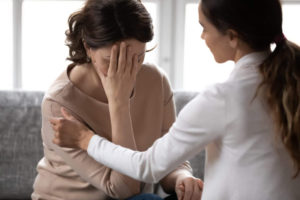The misinformation about PTSD is not only wrong, but dangerous.
Post-traumatic stress disorder (PTSD) has been called many things over the years, but what is it really?
Although clinicians have been aware of the realities of PTSD since the 1980s, many people still hold unfounded beliefs about this disorder. This article will review five common myths associated with PTSD and why they’re wrong.
1. Only soldiers get PTSD.
When most people think about PTSD, they picture hardened war veterans. While PTSD commonly affects veterans, anyone can develop the disorder. Eight million Americans cope with PTSD each year, many of whom have never served in the military. 1 in 10 women are likely to develop PTSD while 1 in 25 men may develop it. Women are more likely to develop PTSD due to sexual assault and child sexual abuse, whereas men are more likely to develop the disorder due to accidents, physical assault, natural disaster and combat.
2. Experiencing trauma is enough to develop PTSD.
Unfortunately, traumatic experiences are very common. According to the U.S. Department of Veterans Affairs, roughly 60 percent of men and 50 percent of women experience at least one trauma over the course of their lives. Traumatic events can include sexual assault, physical assault, accidents, child abuse, combat, natural disaster or witnessing death or injury.
Most people who experience trauma, however, do not develop PTSD. They may experience signs of acute stress after the incident including insomnia, anxiety and depression, but with time, these people tend to recover. Others, meanwhile, go on to experience severe symptoms that last for several months if not years, potentially earning a diagnosis of PTSD.
3. People with PTSD are weak.
Since not everyone who experiences trauma develops PTSD, does this mean that the people who DO develop PTSD are weaker than those who do not?
PTSD is not a character flaw. Some individuals who develop PTSD may do so because of a genetic predisposition to the disorder — not unlike a genetic predisposition to heart disease. Others may develop PTSD because the trauma they experienced was particularly horrific, or because the traumatic experience lasted for a long time.
4. People with PTSD are dangerous.
Most of us are familiar with the classic movie cliché — a character with PTSD doesn’t recognize that he’s no longer at war and violently lashes out at the people around him.
In reality, however, neither psychosis nor aggression is a hallmark symptom of PTSD. In fact, the main symptoms associated with PTSD include:
- Intrusive thoughts
- Nightmares
- Trouble concentrating
- Avoiding thoughts, feelings, locations and people associated with the traumatic event
- Flashbacks, or the sensation that the event is happening again
- Hypervigilance
- Irritability
- Insomnia
- Guilt
- Inability to enjoy old hobbies
- Isolation
- Low mood
5. PTSD cannot be treated.
Mental illnesses like PTSD cannot be cured, but they can be treated.
Researchers and clinicians have uncovered multiple treatment modalities that reduce the symptoms associated with PTSD, including cognitive behavioral therapy, prolonged exposure therapy and eye movement desensitization therapy, or EMDR. Psychiatric medication like mood stabilizers can help if the person has an underlying cyclic mood disorder. Often, the most useful medications are those that calm the brain and the individual, and allow normal sleep without nightmares.
It’s completely possible to live a normal life while also coping with PTSD. You’ve probably met multiple people with PTSD over the course of your life — and never even realized it.
Click the button below to sign up for our paid PTSD study or to learn more.








